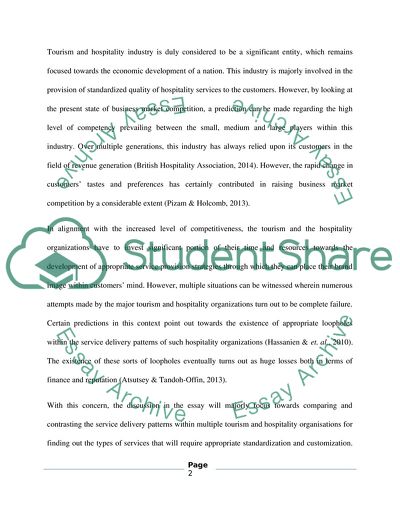Cite this document
(Service Design and Delivery of Commercial Hospitality Coursework, n.d.)
Service Design and Delivery of Commercial Hospitality Coursework. https://studentshare.org/tourism/1846830-compare-and-contrast-the-service-design-and-delivery-of-commercial-hospitality-that-is-intended-to-be-standardised-ie-mass-market-with-that-which-is-intended-to-be-more-customised-to-meet-the-individual-needs-of-customers
Service Design and Delivery of Commercial Hospitality Coursework. https://studentshare.org/tourism/1846830-compare-and-contrast-the-service-design-and-delivery-of-commercial-hospitality-that-is-intended-to-be-standardised-ie-mass-market-with-that-which-is-intended-to-be-more-customised-to-meet-the-individual-needs-of-customers
(Service Design and Delivery of Commercial Hospitality Coursework)
Service Design and Delivery of Commercial Hospitality Coursework. https://studentshare.org/tourism/1846830-compare-and-contrast-the-service-design-and-delivery-of-commercial-hospitality-that-is-intended-to-be-standardised-ie-mass-market-with-that-which-is-intended-to-be-more-customised-to-meet-the-individual-needs-of-customers.
Service Design and Delivery of Commercial Hospitality Coursework. https://studentshare.org/tourism/1846830-compare-and-contrast-the-service-design-and-delivery-of-commercial-hospitality-that-is-intended-to-be-standardised-ie-mass-market-with-that-which-is-intended-to-be-more-customised-to-meet-the-individual-needs-of-customers.
“Service Design and Delivery of Commercial Hospitality Coursework”. https://studentshare.org/tourism/1846830-compare-and-contrast-the-service-design-and-delivery-of-commercial-hospitality-that-is-intended-to-be-standardised-ie-mass-market-with-that-which-is-intended-to-be-more-customised-to-meet-the-individual-needs-of-customers.


